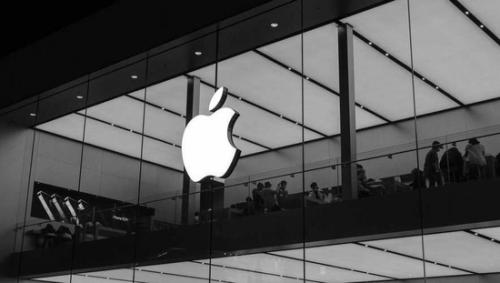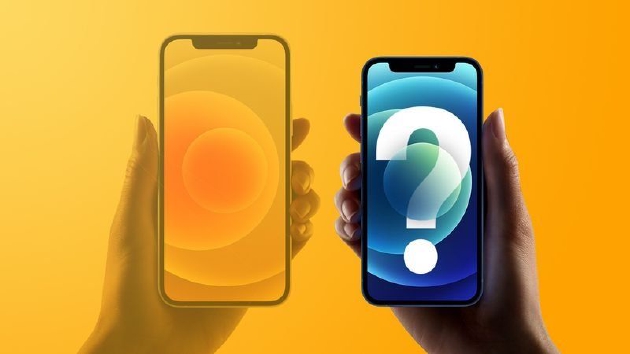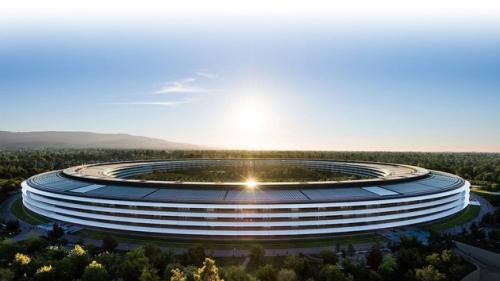your current location is:Home > TechnologyHomeTechnology
Apple brings "Smart Island" to the appointment, and the highlights of previous iPhones are listed
Apple brings "Smart Island" to the appointment, and the highlights of previous iPhones are listed
New cool products will be tested for free for the first time, and many high-quality talents will share their unique life experiences. Come to Sina Public Test and experience the most cutting-edge, most interesting and fun products in various fields~! Download the client and get exclusive benefits!

Apple's 2022 autumn conference came as scheduled with many products headed by the iPhone 14 series, and refreshing features such as "Smart Island" made everyone call "it has to be Apple".
The transformation of the world of technology caused by the iPhone had to start 15 years ago.
Flip the calendar back to June 29, 2007, when Apple co-founder and CEO Steve Jobs unveiled the first iPhone, which he described at the time as a fusion of "iPod, cell phone and Network Communicator" multifunction machine. Although Steve Jobs knew that the iPhone would change the way we communicate and surf the Internet, he probably didn't even expect that such a small device would have such a profound impact on human society.
The first generation of the iPhone laid the foundation for the modern smartphone, ushering in a new era: almost everyone carried a pocket computer with them, and with just a few taps of the screen, an enormous amount of information was presented to them. According to GSMA Intelligence, more than 5 billion people around the world currently use mobile services. Statistics show that the average American uses a mobile phone for more than 4 hours a day, while the Chinese use it for 3.3 hours.
From work, communication, shopping, to travel, finance, entertainment, almost every aspect of our daily life can be done through smartphones, and hundreds of millions of them use iPhones.
As the release of the iPhone 14 attracts global media attention, it's worth taking a look back at how this mighty tech revolution unfolded.
Here's a brief history of the iPhone's development since its inception in 2007:
The original iPhone (2007)

Everything goes back to 2007, when the first iPhone was released. That device has a 3.5-inch screen, a 2-megapixel camera, and a maximum storage capacity of just 16GB. The iPhone at the time didn't even support third-party apps.
The iPhone was primitive compared to today's powerful smartphones, but it set the standard and laid the foundation for the generations of mobile devices that followed. For example, its multi-touch screen opened the way for touch operating systems that are now common on smartphones, tablets, and PCs.
iPhone 3G (2008)

With the launch of the iPhone 3G, Apple added important new features to the phone, such as a GPS module, 3G network and enhanced performance.
But perhaps most important was the official launch of the App Store , which transformed the iPhone from an Internet-only mobile device into a full-featured computing platform.
iPhone 3GS (2009)

The iPhone 3GS further improved Apple's smartphones, offering a 3-megapixel camera, voice control and longer battery life.
The operating system that came with the iPhone 3GS was also important—it built many features that later became industry standards, such as gestures for cut, copy, and paste, and support for multimedia messages.
iPhone 4 (2010)

The iPhone 4 is Apple's first major cosmetic tweak since the iPhone launched in 2007. It's thinner and more angular than previous generations, and it also uses a glass case and stainless steel edging.
The iPhone 4 introduced the retina screen , which became an important feature of Apple products in the future. In fact, the iPhone 4 was the first Apple phone to offer FaceTime video calling.
While the iPhone 4 was well-received, it was not without criticism, most notably for its poor call quality, known as the "antenna gate." When a user holds the iPhone 4 in a certain way, it frequently drops during calls due to antenna problems. Because of this, the US "Consumer Reports" magazine did not list the iPhone 4 as a recommended mobile phone in 2010.
iPhone 4S (2011)

Apple's Siri digital voice assistant is the most famous feature introduced with the iPhone 4S.
Today, Siri is built into almost every Apple product, from the Apple Watch to the Mac to the HomePod Mini.
iPhone 5 (2012)

The iPhone 5 is yet another major overhaul of the look of the iPhone from Apple.
Apple expanded the size of the smartphone to 4 inches with the iPhone 5, a significant upgrade from the previous 3.5-inch screen. Apple's move was even more significant as manufacturers such as Samsung launched large-screen Android phones at the time.
The iPhone 5 was also the first Apple phone to use the Lightning charging port , which is still in use today.
iPhone 5S (2013)

The iPhone 5S was the first Apple phone to incorporate the Touch ID fingerprint recognition sensor on the Home button , which was a hallmark of iPhones until the launch of the iPhone X in 2017.
Touch ID represents a major shift in usage patterns, as it eliminates the need for users to enter a passcode every time they unlock their phone. Although it seems that this method is extremely cumbersome now, at the time, this was the unlocking mode that the entire mobile phone industry has used for many years.
iPhone 5C (2013)

Apple also launched the iPhone 5C with a colorful case that year, which it positioned as a lower-cost alternative to the flagship iPhone 5S. The phone comes in blue, green, and yellow colorways and costs $100 less than the 5S.
Compared with the iPhone 5S, the iPhone 5C has no built-in fingerprint recognition function, and uses the previous-generation processor, changing the aluminum casing of the iPhone 5S to a plastic casing. Despite its modest specs, the phone was significant because it showed Apple was offering iPhone users a low-cost option for the first time , setting a precedent for the later iPhone XR and iPhone 11.
iPhone 6 and iPhone 6 Plus (2014)

The iPhone 6 and iPhone 6 Plus marked a major turning point in the history of the iPhone.
The larger-screen iPhone 6 Plus represents a further extension of Apple's smartphone lineup, allowing consumers to choose between two different screen sizes for the first time. At the time, Android phone screens were getting bigger and bigger, and iPhone screens had remained at 4 inches for many years - in this context, the importance of this phone is self-evident.
The iPhone 6 and iPhone 6 Plus also redesigned the entire product line, with most elements remaining until 2017, when the iPhone X introduced the bezel-less notch. In addition, the iPhone 6 also features a faster processor and larger storage options.
iPhone 6S and iPhone 6S Plus (2015)

Compared with the iPhone 6, the iPhone 6S and iPhone 6S Plus are not much upgrades, mainly adding a new feature called 3D Touch, which is convenient for users to call shortcut keys by pressing hard on the screen.
The phone also features a faster processor and a better-quality 12-megapixel camera.
iPhone SE (2016)

Apple launched the iPhone SE in 2016, a low-priced product aimed at a lower-priced iPhone with a smaller screen than the iPhone 6 and 6S.
The iPhone SE had a 4-inch screen similar to the iPhone 5 and 5S, but the same processor as the iPhone 6S flagship at the time.
iPhone 7 and iPhone 7 Plus (2016)
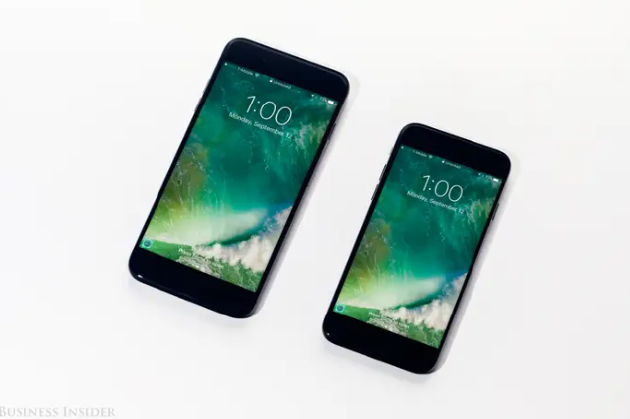
With the launch of the iPhone 7 and iPhone 7 Plus, Apple officially eliminated the headphone jack from its phone lineup. This is the first generation of Apple phones that does not provide a 3.5-inch headphone jack, and users can only use headphones through the Lightning port. Apple also launched the first-generation AirPods true wireless Bluetooth earphones that year.
Apple may not be the first company to do away with the headphone jack on its smartphones, but the launch of the iPhone 7 has made the practice quickly followed by its peers. The popularity of AirPods has also risen rapidly: Apple analyst Ming-Chi Kuo estimates that Apple sold 27 million pairs of AirPods in the most recent holiday season alone.
The iPhone 7 Plus is also the first Apple phone to feature dual cameras and a portrait mode that sharpens images by slightly blurring the background. The iPhone 7 and 7 Plus were also the first Apple smartphones to be waterproof.
iPhone 8 and iPhone 8 Plus (2017)

The iPhone 8 and 8 Plus mark the first time Apple has introduced wireless charging to its phone line . Both products also feature a new glass design , finally ditching the aluminum frame design that has been around for years since the iPhone 5.
iPhone X (2017)

The iPhone X is a key product for Apple. It was released alongside the iPhone 8 and 8 Plus, making it the company's first phone with an edge-to -edge OLED screen . It supports face recognition and cancels the Home button .
The design of the iPhones on the market today is inherited from this product, and it was also the first Apple smartphone to start at $1,000.
iPhone XS and iPhone XS Max (2018)

The iPhone XS and iPhone XS Max are successors to the iPhone X with faster processors, better water resistance, and a better portrait mode.
The two products are not much different from the iPhone X, but further suggest that Apple will continue to use the iPhone X's full-screen design in future flagships.
iPhone XR (2018)

Apple also launched the iPhone XR at the same time as the iPhone XS and XS Max, which are available in multiple colors and cost about $250 less than the iPhone XS.
The iPhone XR is positioned as a low-cost alternative to Apple's flagship machine, with a full-screen design, but the price is more acceptable than the $1,000 iPhone XS. It doesn't use the OLED screen and dual-camera system of the iPhone XS, but it looks very similar.
iPhone 11 (2019)

The iPhone 11, which starts at a relatively low $700 and is available in multiple colors, is essentially the follow-up to the iPhone XR.
The phone is equipped with a new dual-camera system, including an ultra-wide-angle lens that supports night scene mode, as well as a faster processor and a higher-definition front-facing camera.
iPhone 11 Pro and iPhone 11 Pro Max (2019)
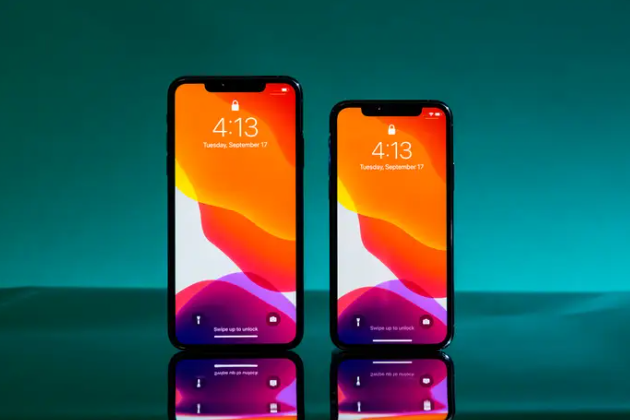
The pricier iPhone 11 Pro and iPhone 11 Pro Max are the first Apple phones to feature a triple-camera system: a wide-angle, an ultra-wide-angle, and a telephoto lens. At its September event that year, Apple positioned the product as the ultimate mobile camera for professional photography and video shooters.
The phone has a new matte finish, an upgraded lens sensor, and slightly tweaked design compared to the iPhone XS and iPhone XS Max.
iPhone 12 and iPhone 12 Mini (2020)

With the release of the iPhone 12 in 2020, the Apple mobile phone family has once again updated its design.
This generation of phones ditches the sleek metal bezels of the iPhone 6 for smooth, right- angled edges that are reminiscent of earlier iPhones. Apple is also giving the standard iPhone an OLED display, a better camera, a 5G module, and compatibility with MagSafe accessories.
The iPhone 12 also has a Mini model , which appears to act as a follow-up to the popular iPhone SE that preceded it.
iPhone 12 Pro and iPhone 12 Pro Max (2020)
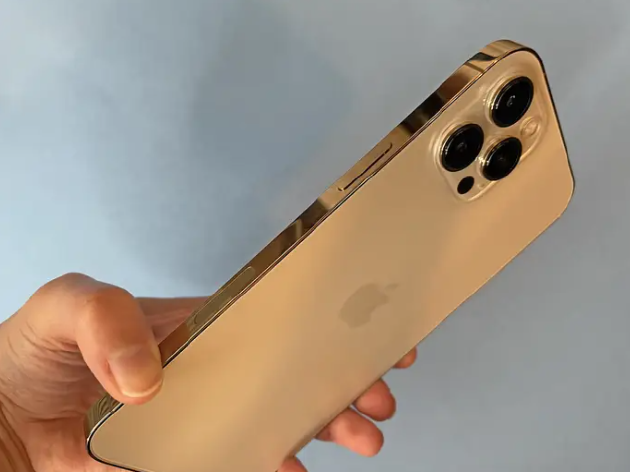
Like the standard iPhone 12, Apple's Pro model that year had an updated design with more sleek, high-end elements.
The two pricier models also feature larger screens than the previous generation, as well as an upgraded triple-camera system with built-in augmented reality, faster processors and longer battery life.
iPhone 13 and iPhone 13 Mini (2021)

Compared to the 2020 design revamp, Apple's base 2021 iPhone has limited upgrades, with only brighter screens, new camera modules and better camera performance.
Maybe battery life is the point. The iPhone 13 features a larger battery and a more energy-efficient display, as well as improved energy efficiency with an upgraded processor.
iPhone 13 Pro and iPhone 13 Pro Max (2021)

The battery life of the 2021 iPhone 13 Pro has also been upgraded, with tests showing that it can play streaming video continuously for more than 16 hours. In addition, the iPhone 13 Pro and Pro max feature faster speeds and image quality that is second to none in the industry.
iPhone 14 and iPhone 14 Plus (2022)

The new iPhone 14 Plus is a large 6.7-inch phone, the same size as the iPhone 14 Pro Max. Both the iPhone 14 and 14 Plus have better battery life and better cameras than the previous generation, and both are transitioning to SIM-free mode.
The iPhone 14 series also provides a new emergency satellite SOS system , which can send rescue information directly through satellites, and can also detect whether the owner has encountered a collision through the collision detection function.
Both products start at $799.
iPhone 14 Pro and iPhone 14 Pro Max (2022)

These two models replaced the previous Liu Haiping with a pill-shaped opening, which is a major change in design.
Some notifications are displayed in a way that integrates with the opening of the pill screen, which Apple calls "Dynamic Island."
The cameras on both phones feature a 48-megapixel sensor in place of the previous 12-megapixel sensor.
The Pro model starts at $999.
Previous:In India, Web3 ride-hailing app Drife is challenging Uber
Next:Apple iOS 16 will support detection of counterfeit AirPods headphones
related articles
Article Comments (0)
- This article has not received comments yet, hurry up and grab the first frame~








